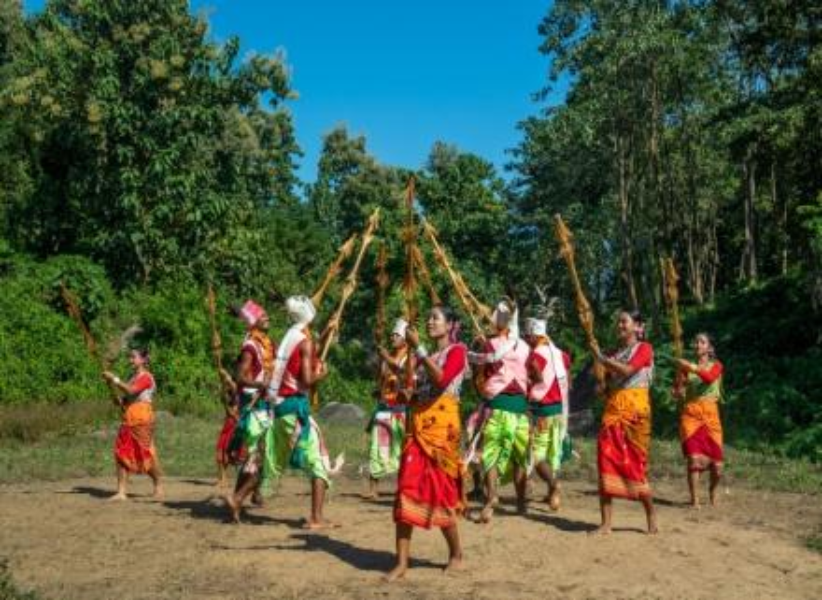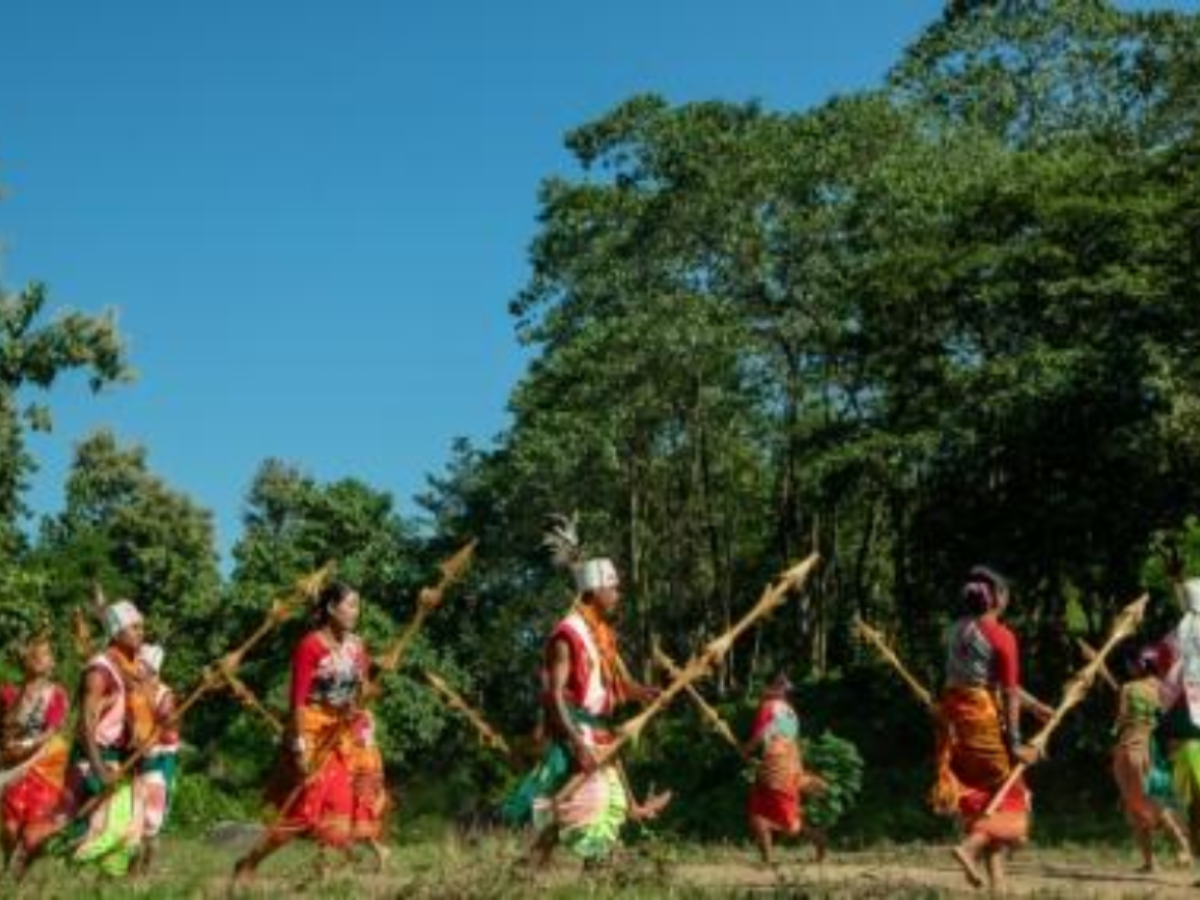
Themes
tribal dance
Langkhon Phuja Michawa Dance , assam
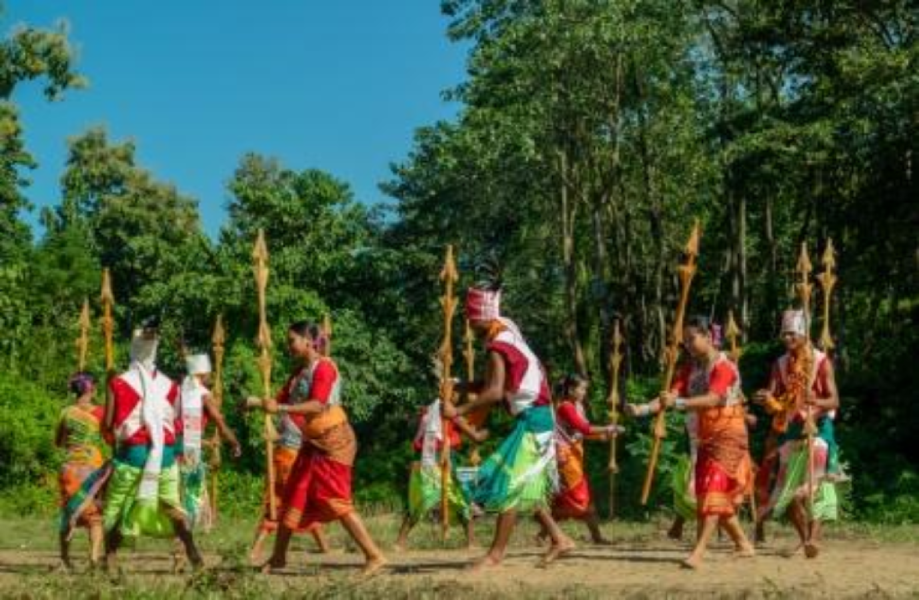
Celebrated by the Tiwa tribe in Assam, this autumnal Langkhon Phuja Michawa Festival centers on the agricultural practices of the hill Tiwas, specifically the Jhum (slash-and-burn) and Panikheti (wet) cultivations. Through rituals dedicated to deities Ramcha and Bijuli, the Tiwa people pray for bountiful harvests and protection from natural calamities, pests, and wild animals. The festival’s worship and dance rituals embody the community’s deep connection to their agrarian roots and cultural heritage.
A distinctive feature of the Langkhon Phuja Michawa dance, the Bijuli bamboo is a decorated bamboo staff carried by dancers. Each bamboo is intricately carved with floral patterns by scraping the outer covering, adding an aesthetic element to the ritual. These bamboo staves symbolize strength, unity, and cultural pride, making the dance not only a form of expression but also a visual showcase of Tiwa artistry and reverence for nature.
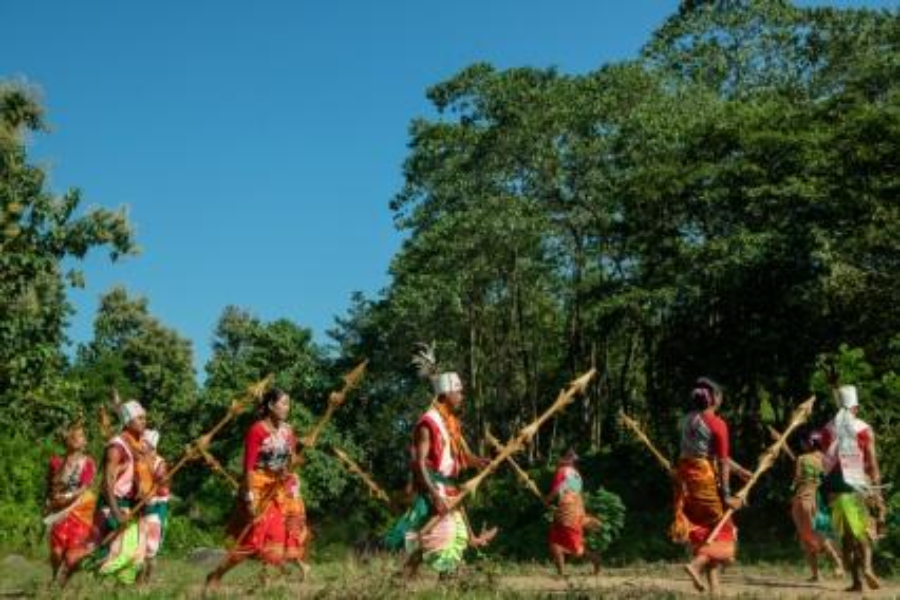
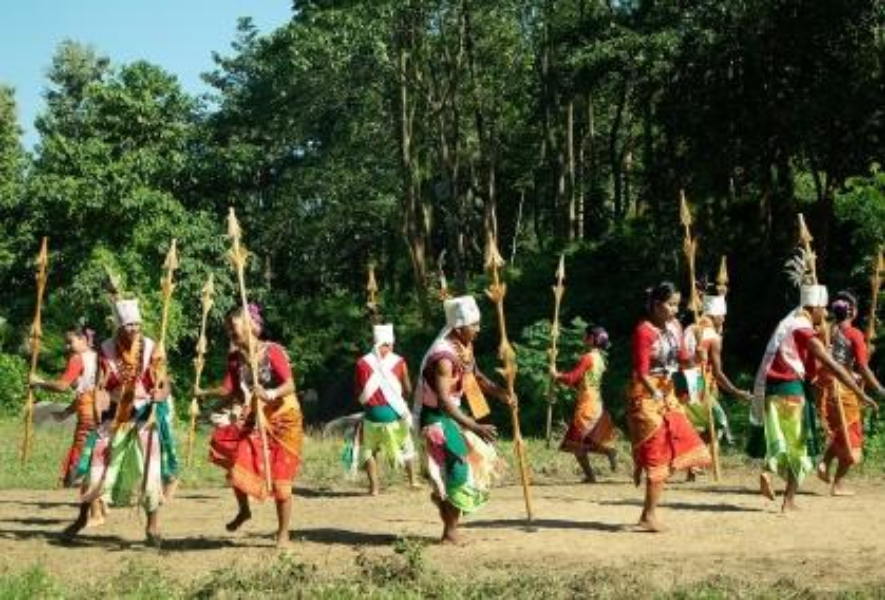
Traditional attire worn during Langkhon Phuja Michawa reflects Tiwa cultural identity, with male dancers donning items like Tagla (shirt), Thana (dhoti), and Faga (gamosha), while female dancers wear Faskay (bukut mara methoni) and Kasong (mekhela). Adorned with ornaments like Saplo (neck chain) and Chikilo (coin necklace), the dancers’ appearance is an embodiment of Tiwa traditions, symbolizing respect and elegance in ceremonial settings.
The Khram Ludang is a traditional Tiwa musical instrument resembling a large drum, essential in Tiwa dances. Its deep, resonant tones provide rhythm to the Langkhon Phuja Michawa dance, enhancing the ceremonial atmosphere. The Khram Ludang is often accompanied by other instruments such as the Pangshi (flute) and Khawang (cymbals), creating a dynamic musical backdrop that reflects the energy and vibrancy of the Tiwa festival.
